"Grand", "Big Baltic", "Russian Knight" - but what's the difference, if brilliant?
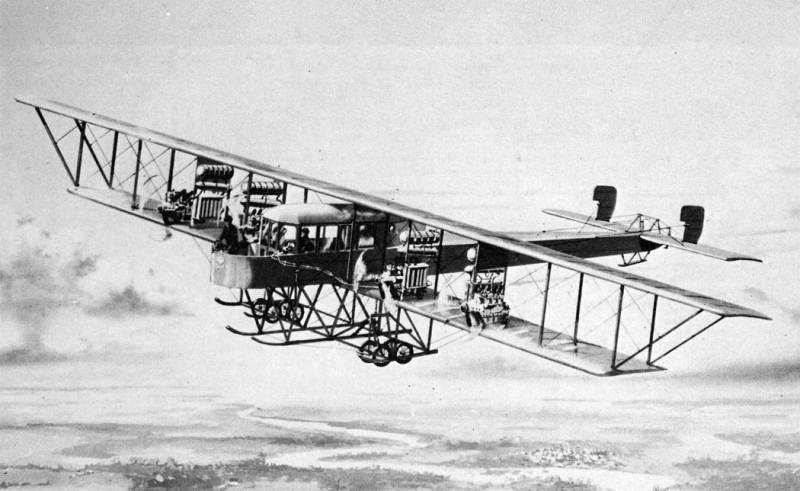
1913 was a milestone year for stories world aviation. It would seem that the airplane had just taken off the ground, and the height began to gain no worse than the rockets of later times. In 1913, the first international seaplane competition for the Schneider Cup took place in Monaco, the great Russian pilot Pyotr Nikolaevich Nesterov performed his “dead loop” for the first time, the great Frenchman Roland Garros made the first non-stop flight across the Mediterranean Sea, flying over 8 km in 700 hours, American Georgia "Tiny" Broadwick becomes the first woman to parachute out of an airplane, jumping over Los Angeles, and for the first time the multi-engine aircraft of the great Russian aircraft designer Igor Ivanovich Sikorsky, the twin-engine (after four-engine) Russian Knight and the four-engine Ilya Muromets, took to the skies.
But the story began much earlier, on May 25, 1889 in the city of Kiev, when the fifth child was born in the family of a famous psychiatrist, professor of the Department of Mental and Nervous Diseases of Kiev University Ivan Alekseevich Sikorsky and Maria Stefanovna Sikorskaya, nee Temryuk-Cherkasova, who was named Igor.
In history, of course, there were people who did as much or more for aviation than Sikorsky, but still, the multi-engine layout of a heavy aircraft and a helicopter is more than enough for the title of a great designer and a long and grateful memory of the entire aviation community.
Namely, in 1913, not just another new airplane flew, it was just possible to surprise, but difficult, but a huge four-engine aircraft at that time. The world press fell into a black precipitate, because Russia by no means could boast of a developed aircraft industry, which consisted of several semi-handicraft workshops where imported airplanes were repaired. And the Russian plane, and even such ...
Wouldn't you have yelled at that time? Yes, the voice would be broken, I'm sure.
What can I say, if Emperor Nicholas II himself rushed to look at the curiosity, then what can we say about the townsfolk?
And yes, the occasion was… it was really huge!
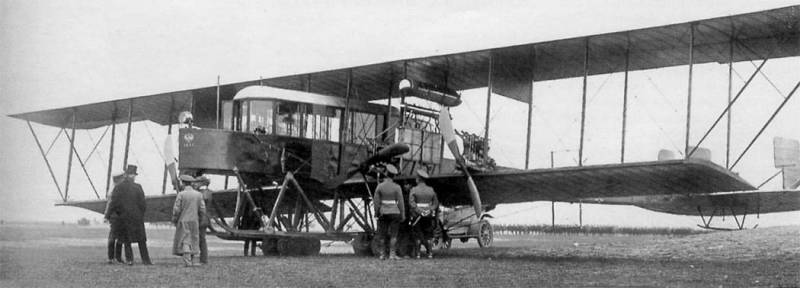
Probably, it is worth giving a general plan of the Russian aircraft industry of that time. The first plant was the Moscow Dux, which assembled its first airplane in 1909 and proudly bore the name of the First Imperial Aircraft Building Plant. In St. Petersburg, the first was the "First Russian Association of Aeronautics", created in 1910 (since 1915, the Gamayun plant). The third was the "Russian-Baltic Carriage Works", abbreviated as "Russo-Balt", famous for its luxurious cars.
At Russo-Balt there were aviation workshops, which were led by the smartest person of that time, in fact the father of strategic aviation, Mikhail Vladimirovich Shidlovsky. A man who foresaw the role of bomber aviation in wars and believed in the genius of Igor Sikorsky.
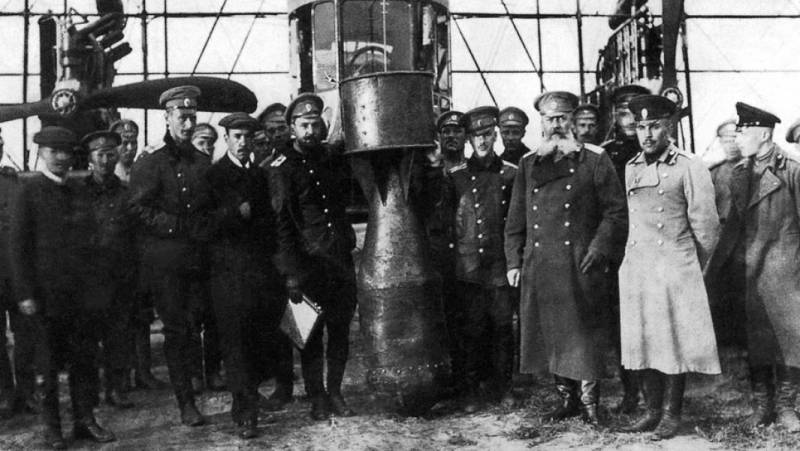
In the photo, Shidlovsky stands second to the right of the bomb, with such a beard. And the second from the left is the young Sikorsky.
Unfortunately, the father of the idea of strategic and long-range aviation, the commander of the first division of heavy bombers, the author of the strategy for the use of bomber aviation, who put it into practice, the head of the creation of the Russian Knight, Ilya Muromets and the first Russian aircraft engine in April 1917 was accused of incompetence, removed from his post and recalled to Petrograd, and on June 20 he was dismissed from service. The materials of criminal case No. 9964 of the archives of the FSB Directorate for St. Petersburg and the Leningrad Region indicate that Mikhail Shidlovsky was arrested in 1919 by degenerates in leather jackets on charges of espionage and shot on January 14, 1921.
Without Shidlovsky's help, Sikorsky would not have been able to realize his projects, because Shidlovsky not only provided Sikorsky with production facilities, but also found funding for his developments.
And what Sikorsky proposed was very bold. Moreover, not only for Russia, which is backward in terms of aviation, but for the whole world. Twin-engine aircraft were already in development, designers from many countries fought with them. So a twin-engine aircraft was not something surprising, rather, difficult to achieve. Because Sikorsky ventured to swing at a four-engine aircraft. Moreover, Shidlovsky organized the purchase of four Argus engines with a power of as much as 100 hp each.
And in 1910 Sikorsky went to work.
The plane turned out to be very large. Huge. Therefore, he was immediately given the nickname "Grand", that is, big. And it was under this name that the airplane made its first flight in a twin-engine configuration. And when Sikorsky made it four-engine, the name was changed: "Big Russian-Baltic". The final "Russian Knight" appeared even later, let's say it was already a purely marketing ploy.
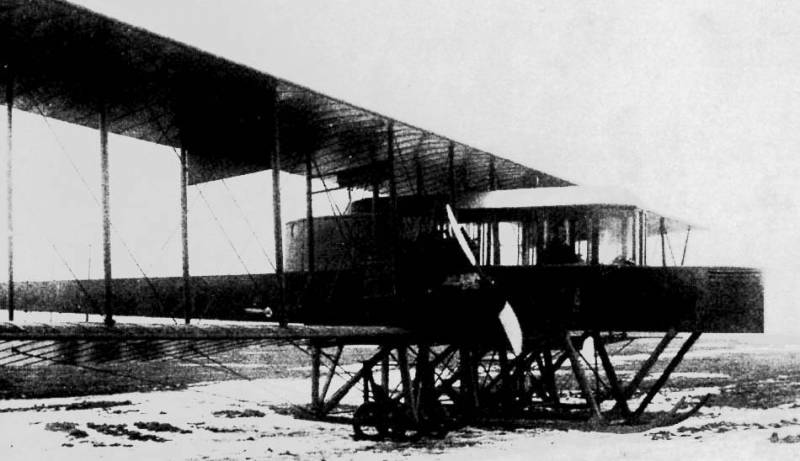
There were a lot of problems during the construction, but perhaps the main one could be called the information war that broke out around the Grand. Disputes at that time were about as commonplace as Internet battles are today. Moreover, the "experts" were approximately the same degree of awareness.
For example, "aviation experts" a hundred years ago seriously said that a large aircraft would not be able to fly for many reasons. But at that time it was believed that the lift force of the wing is the result of the rejection of air particles by the leading edge, and therefore increasing the chord over some accepted values is meaningless.
It’s just that in 1910 they didn’t know yet that most of the lift is obtained due to rarefaction over the upper part of the wing, created by flowing around a profiled bearing surface. Therefore, there were many arguments of varying degrees of gaiety. More than enough.
For example, very often they cited ... an ostrich as an example! Say, the bird is heavy, and therefore does not fly. And a heavy aircraft is completely from the same opera.
In general, the trolls were already then, thank God, there was no Internet. But even without that, Sikorsky had a hard time, because all these very (and not very) scientific societies demanded respect and answers to questions.
"... the future of aviation belongs to heavy, but high-speed vehicles, which, with their enormous speed and mass, will give the aviator reliable support in the air ...".
“Great mass and speed are the key to the future of aviation. No need to be afraid of big heavy machines! Give them speed and you will launch the wagon into the air. The changeability of the pilot in the air, the independence of the flight from stopping the engines, the maintenance of them in the air - these are the enormous advantages of large vehicles ... "
(From Sikorsky's speech at the Second All-Russian Aeronautical Congress in 1912)
Despite all the confidence of Sikorsky and Shidlovsky, there were more skeptics and in the end they even formulated a number of reasons why a large plane would not be able to fly normally:
1. The results obtained during the operation of conventional airplanes cannot be transferred to large ones.
(It is very difficult to say why the identity rules should not work here, the history of the arguments did not save us)
2. An airplane can be so heavy that it won't be able to get off the ground despite its huge wings. And if it breaks off, due to inertia, it will be impossible to control it in the air, and even more so when landing.
(Not without reason, this has happened in history. However, the fault was not so much the ratio of engine power to the mass of the airplane, but ignorance of aerodynamics)
3. Multi-engine power plant will create many problems. If at least one engine fails, the traction balance will be so disturbed that it will become impossible to control the machine.
(Again, a lack of information. Examples were given of variants of airplanes that had two propellers driven by one motor. If one of the drive chains broke, then the airplane usually crashed)
4. A closed cockpit will deprive the pilot of the ability to feel the force and direction of the air flow and will not allow timely intervention in the control of the machine.
(There was also a rational grain in these doubts, because the instrumentation was in its infancy, and the pilots really oriented along the flow. But here the “trick” is that Sikorsky himself was just a great pilot who perfectly felt the car and the air flow to him as a carrier of information was not very helpful)
At that time, work on multi-engine aircraft was already in full swing. But the idea was somewhat different: try to rotate one propeller with two weak engines. So did the British from Short and the Germans from Linke-Hoffman. But they all worked with two engines for one propeller through a complex transmission, and therefore there was no success.
More rational was the decision of another genius of engineering, the Russian inventor and designer Boris Grigoryevich Lutsky. On the Lutsky-1910 aircraft built by him in 2 at the German company Daimler, there were two engines, which were located one after the other and set two coaxial propellers in rotation. The plane turned out to be successful and was considered at that time one of the largest in the world.
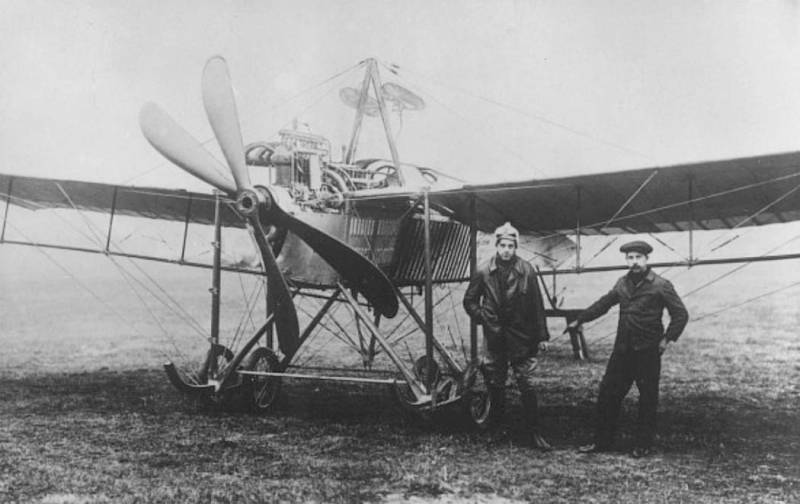
But to install the engines on the wing ... It was too much. This frightened many both in Russia and abroad.
The general assembly of the "Grand" was carried out at the Komendantsky airfield and was completed by the beginning of March 1913. The aircraft caused amazement with its dimensions: the span of the upper wing was 27 m, the lower wing - 20 m, the total area of \u125b\u3bwings - XNUMX square meters. m, the take-off weight of the aircraft is more than XNUMX tons. Really the largest in the world at that time.
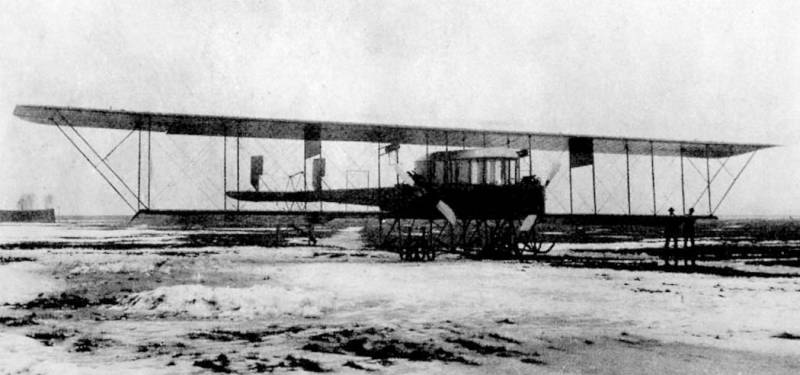
Four Argus engines, 100 hp each. With. located in tandem installations on the lower wing near the fuselage. This was done in case of failure of one of the engines in order to minimize the turning moment. In addition, the vertical tail was made with a convex-concave profile, the convex side to the fuselage, and in the event of an engine failure, the profile keel, blown by the flow from the propellers of the operating engines, provided a restoring moment. The existing risk was constructively minimized.
The location of the engines on the wing contributed to an increase in the useful volume of the cabin. The nose of the fuselage was made in the form of an open balcony, behind which there was a fully glazed cockpit 5,75 m long and 1,85 m high. There were two places for pilots in the cockpit, behind them a glass partition with a door to the passenger compartment, behind which there was a wash basin and toilet. There were several wicker chairs and a table in the salon.
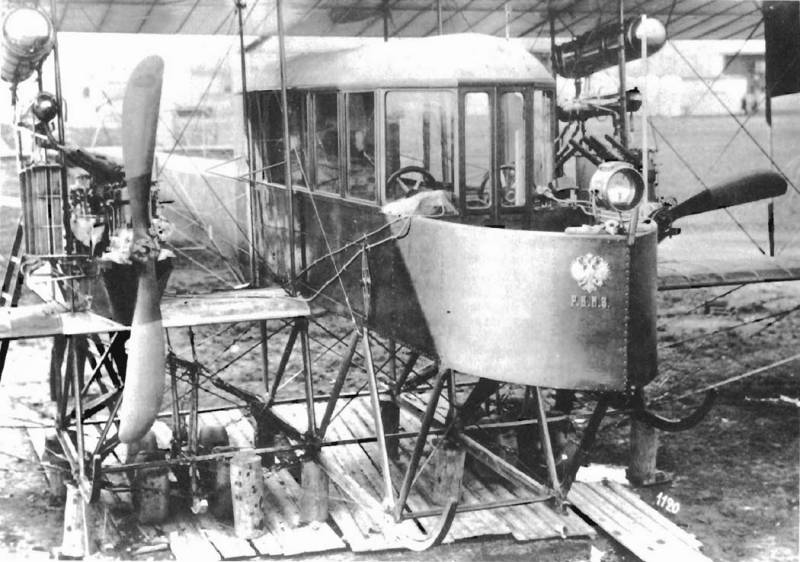
The chassis was impressive: carts of eight twin wheels each, equipped with cord shock absorbers, were attached between the skids.
The control of the aircraft was duplicated, but the control of the engines was on the left, at the crew commander. It is still there today, the place of the commander.
By the beginning of March 1913, the front engines were mounted, and the excellent pilot Sikorsky decided to make the first flight on two engines. On March 15, several runs and a small approach were made, but then the tests stalled due to the airfield, which had become muddy in the spring.
In early April, the Grand and the airfield were again ready for testing. During the month, several runs and flights were made within the airfield. The takeoff run of the "Grand" was about 400 meters, the plane took off easily, but the size affected, the control was somewhat sluggish.
A few words about the innovation - a closed cabin. At that time, there was a real ability of pilots to control an airplane, focusing on the oncoming air flow. The pressure testified to the speed, the change in the direction of the flow - to the side slip. And being guided in this way, the pilots reacted with rudders. They talked about the "bird instinct", which is not given to everyone. But in those days, pilots were akin to celestials.
The closed cockpit deprived the pilot of all the sensations associated with the air flow, and required him to navigate by instruments, which, so to speak, were few and the quality was not the best.
Sikorsky in his plane tried to equip to the maximum:
- compass;
- four tachometers from four engines;
- two aneroid altimeters;
- two anemometers to determine the speed;
- slip indicator (tube with a ball inside);
- pitch indicator (the same tube, but in a different plane);
- two indicators of the amount of fuel.
In general, everything is rather primitive, but in 1913 this magnificence was a very breakthrough thing. Aircraft of that time sometimes had much less instruments. But even such a set made it possible to fly an airplane out of sight of the horizon.
On April 27, Sikorsky set the Grand to the start. The first flight was through the airfield in a straight line, the plane took off normally, gained a height of about 10 meters and a speed of 80 km/h. They no longer gave the dimensions of the airfield, after which Sikorsky landed the airplane. The power of the two "Argus" was clearly not enough, but nevertheless, the plane was ready to fly in a circle.
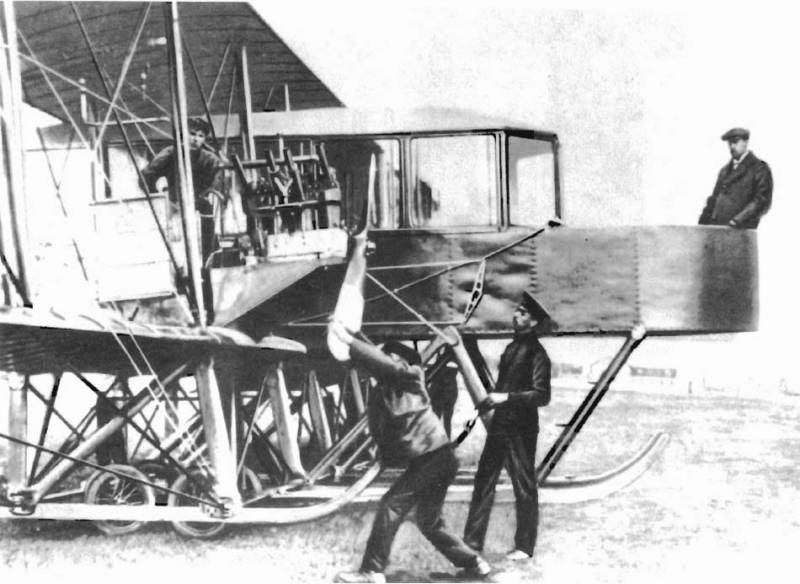
And in the evening of the same day, a very long day for Igor Ivanovich on April 27, at about 22 p.m., the Grand stood up for the start for the second time. Mechanic V.I. Panasyuk was on the "balcony", the co-pilot G.V. Yankovsky was in his place in the cockpit.
Just like in the morning, the Grand accelerated and took off from the ground.
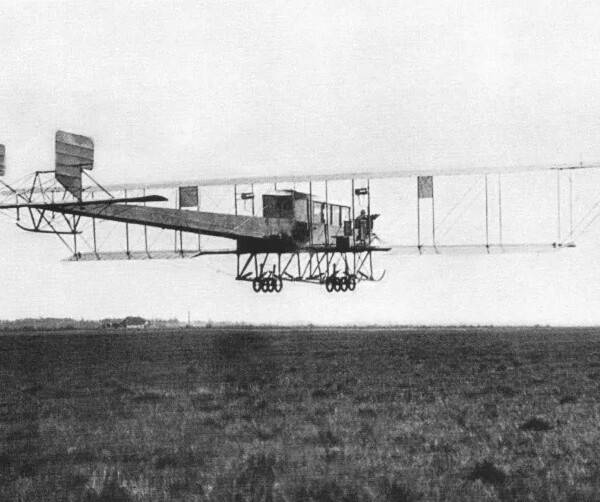
There was a complete calm, and in such conditions the plane began to gain altitude. Yes, two engines gave little power and the climb was slow, but gradually Sikorsky was able to gain a height of 100 meters and make the first turn. The plane was moving along the horizon at a speed of 80 km / h and obeyed the rudders well. Of course, the reaction was slower than that of single-engine vehicles, but this is understandable: an airship is not an airplane weighing 300-400 kg.
Sikorsky flew in a circle, leaving the airfield for about one and a half kilometers. He returned to the airfield and landed, as they say, in the normal mode. After landing, the mechanic examined the landing gear, everything was in order, it was possible to taxi to the hangar, but the engines had to be turned off: a huge crowd of people watching the flight was rushing onto the plane.
Sikorsky turned off the engines. The crew went out to the “balcony”, and a huge number of people rejoiced around, who were so happy about the flight that it seemed that they, and not the crew, were participants in the test. The plane was impossible to budge. Sikorsky tried to pass through the crowd, but he, along with Yankovsky and Panasyuk, was picked up and carried to Shidlovsky. All supporters of big planes were immensely happy - the big plane proved its ability to fly.
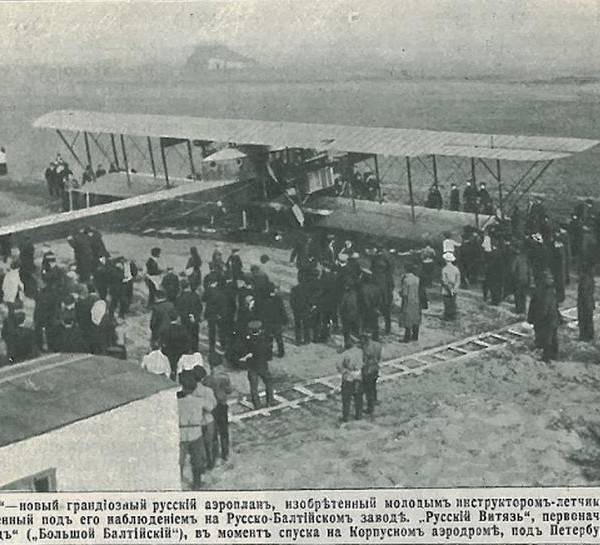
Next was the installation of the second pair of engines. After a few days of adjustment, Sikorsky felt it was safe to fly again. The flight was scheduled for May 6th.

On the day of the flight, a very strong (18-20 m/s) wind blew. Flights were canceled altogether, and the planes were in hangars or tied to corkscrews. However, Igor Ivanovich decided that the wind was not a hindrance to a heavy machine and gave the order to start.
Due to the strong headwind, the speed relative to the ground was almost not felt, but the car climbed well compared to the previous flight. In flight, Sikorsky successfully parried rolls that caused gusts of wind, and his theory of inertia was confirmed. On four engines, the Grand calmly gained a height of 200 meters and gave out 90 km / h of speed. The rear engines added inertia, but the airplane became noticeably more powerful.
The flight went well, and after the press gave Sikorsky a uniform ovation.
Then Sikorsky made a number of flights over the city, moreover, with a "load" of passengers from among fellow pilots. The plane showed that it can fly perfectly on two engines.
On May 13 and 27, Sikorsky performed very long (up to an hour) flights, having 3-4 passengers on board. This tested various options for centering the aircraft, the passengers played the role of a moving ballast, moving around the cockpit and going out to the balcony.
The flights gave a huge amount of information, having processed which, Sikorsky in June 1913 made a landmark decision: to abandon the tandem engine layout, since the rear propeller, being in the air flow from the front, gave less power. The tandem arrangement was beneficial in case of failure of one of the engines, since such a scheme made it possible to compensate for the asymmetry of thrust. But Sikorsky decided to take such a step, especially since no one in the world has yet tried to compare the capabilities of one car with different engine arrangements.
And the rear engines were removed and installed in a row on the lower wing.

The first flight of the "Big Baltic" with in-line engines was made on June 23, 1913. The rearrangement significantly improved take-off performance and gave some increase in speed and rate of climb.
About the plane became known at the very top, and, being in Tsarskoye Selo, Emperor Nicholas II wished to inspect the plane. On June 25, Sikorsky flew to Tsarskoye Selo, to the local airfield, and there Nicholas II saw the Bolshoi.
The tsar walked around the plane, Sikorsky accompanied him, answering questions. Later, Igor Ivanovich recalled that he was extremely surprised that the emperor asked questions on the merits, demonstrating knowledge of the aviation topic, quite decent from an engineering point of view.
Having examined the plane from the outside, Nikolai wished to board. The tsar and the designer climbed onto the balcony by a ladder and there they were photographed by the court photographer.
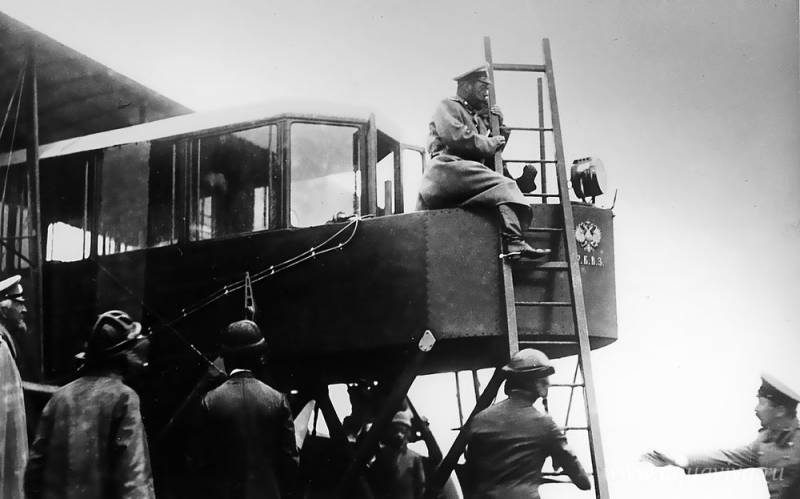
Nicholas II was very impressed with what he saw and was so pleased with Sikorsky's answers that he sent the designer a gold watch as a gift.
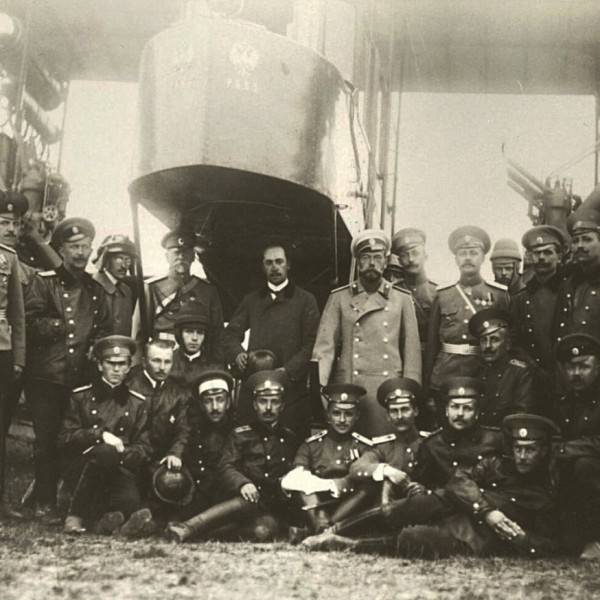
On the same day, Sikorsky tested his offspring in a blind flight. Returning to the Corps airfield, "Bolshoi" got into a rain band, so heavy (Oh, Peter!), That the glass was flooded with water, not giving any visibility. However, using the set of instruments with which he equipped the aircraft, Sikorsky was able to go to the airfield and land without incident.
After these successes, in an interview with Birzhevye Vedomosti, Sikorsky formulated and explained his tasks as a designer:
“Of all that I have managed to do so far, the Grand should be considered the largest. After all, everything that has been so far is nothing more than air kayaks. I have long dreamed of an airship. Starting to build it, I definitely set out to introduce three main principles into the equipment of an aircraft, namely:
1) on a long-distance air journey, the pilot must be able to change on the fly;
2) stopping the engine on the way should not decide the fate of the pilot, aviator and passenger;
3) the possibility of caring for the motor on the road, fixing it on the go.
I have achieved all this, and this may give a new direction in the design of apparatuses. When building the Grand, of course, I also had military purposes in mind. For the time being, we spare this apparatus and keep it for great experiments. After almost every flight, I make some changes and corrections. So, after the last flight, I changed the position of the four motors installed on the device, thanks to which I was able to increase the thrust. He also added two new rudders, built a flying laboratory on the apparatus. In a word, every time you notice something new and rush to immediately make an amendment. Next week I will start flying this aircraft again. Studying it in action, I find that it fully justified the hopes that I had placed in it.
The third point was checked by Sikorsky's crew during the next month. In one of the flights, the rear mount of one of the engines burst, and it could break off the wing. Mechanic Parasyuk, having collected belts from all those on board, went out onto the wing and, with the help of belts, somehow pulled the engine into the frame. The viability of in-line placement of engines on the wing and access to them during the flight were finally proven in practice.
"Big Baltic" made many flights over St. Petersburg. There was a flight to Gatchina and back with four passengers. The length of the route was as much as 100 km. Shortly after this flight, the aircraft was finally renamed the Russian Knight. On August 2, 1913, Sikorsky set a world flight record: 1 hour and 54 minutes.
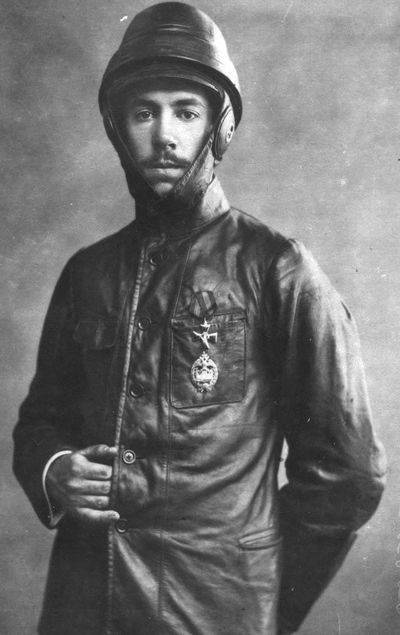
There were seven people on board the plane. Many people watched these flights of the giant, and soon the Grand received a new name - the Russian Knight. It used to be sometimes called that way, but now this name has finally been established.
The end of the "Russian Knight"
In the same August, the Vityaz was removed from the hangar. August turned out to be rainy, and the new Russo-Balta aircraft, the S-10 biplane and the S-11 monoplane, were delivered to the hangar. There were competitions that were arranged by the Russian military department and on which the package of possible orders and the reputation of the plant depended. The airplanes were designed by Sikorsky, but his participation in the flights was not supposed, the factory pilots were supposed to fly.
On September 11, in the evening, in front of Sikorsky, the engine of the plane piloted by his longtime rival in competition, Gaber-Vlynsky, broke off and fell on the biplane box of the Vityaz.
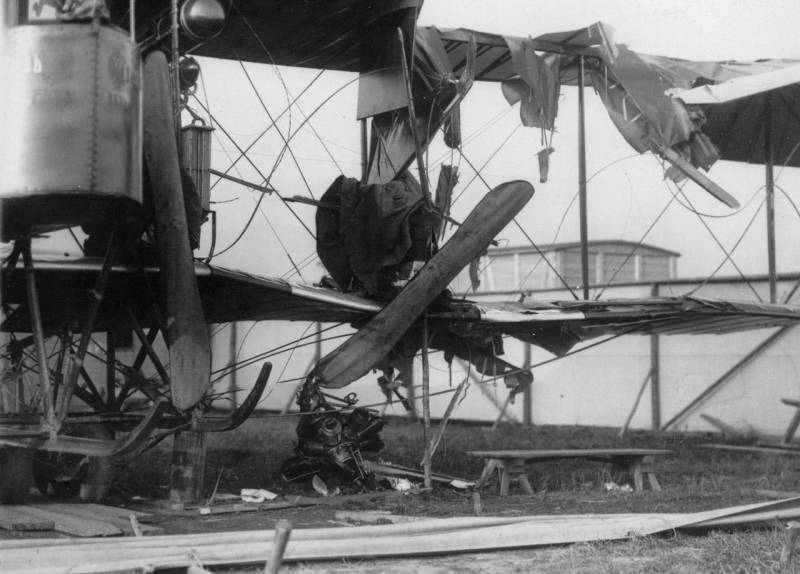
It is noteworthy that Gaber-Vlynsky fought for his life to the last and fell along with the plane, but not only remained alive, he also escaped with minor injuries.
But the "Vityaz" received heavy damage. The wing was practically destroyed, and Sikorsky decided not to repair it. By that time, the aircraft had made 53 flights with a total duration of more than 11 hours, and these flights provided simply a huge amount of invaluable information. Moreover, Igor Ivanovich himself was working on a more advanced machine by that time.
So the "Russian Knight" should be considered the ancestor of all multi-engine aircraft in the world.
The second to follow the example of Sikorsky was the no less great Italian engineer Giovanni Battista Caproni. Already after the creation of the Grand, Caproni built his Sa-30, but in his plane three engines rotated three propellers, but the first was pusher, and the pullers in the wings were driven through a very complex transmission, from engines located in the gondola with the crew.
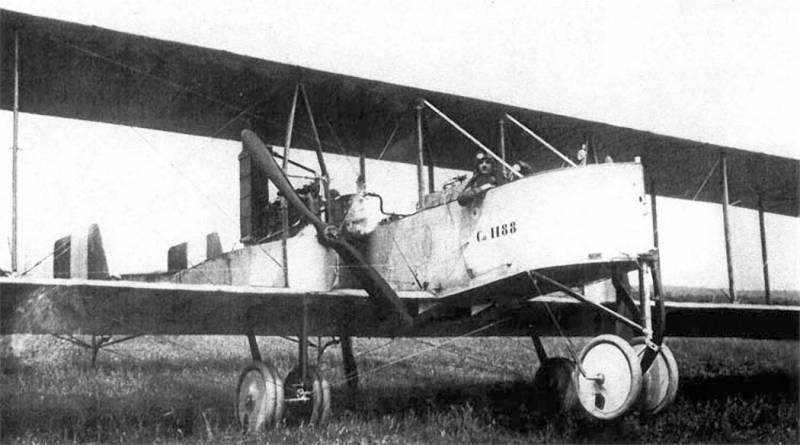
And this creation could not be considered successful. Only by placing the engines on the wings, in the Sa-31 and Sa-34 aircraft, did Caproni achieve what he wanted in 1914.
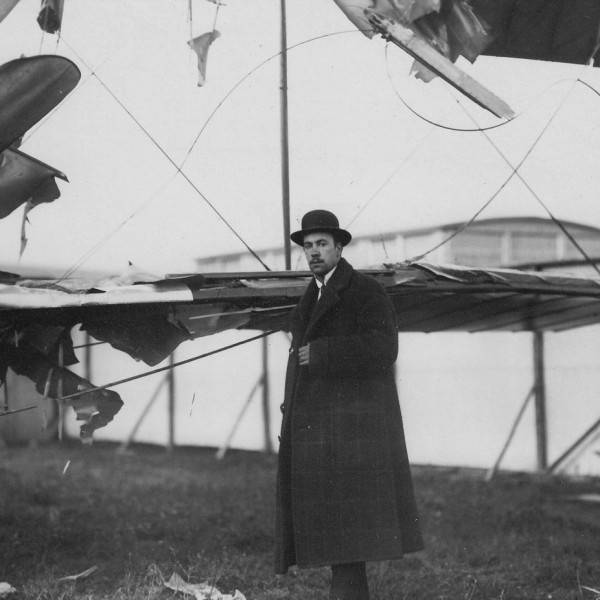
Today, May 25, marks 134 years since the birth of the great aircraft designer Igor Ivanovich Sikorsky, who entered Russia into the history of world aviation and put it on a par with the aviation powers recognized at that time.
LTH "Grand"
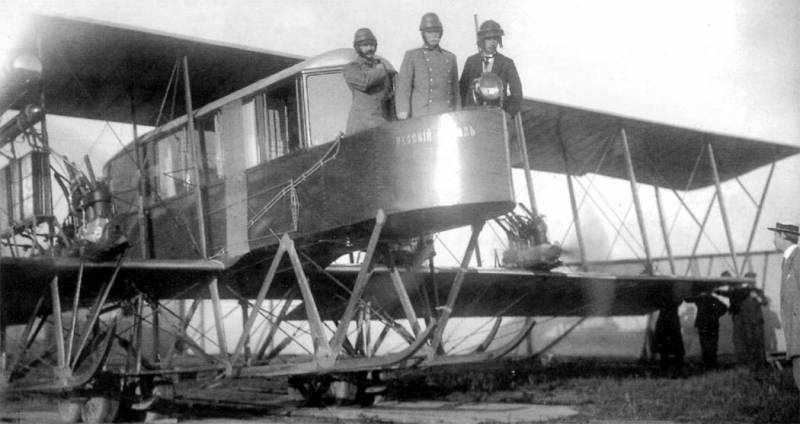
Wingspan, m
- top: 27,00
- lower: 20,00
Length, m: 20,00
Wing area, м2: 125,00
Weight, kg
- empty aircraft: 3 400
- normal takeoff: 4 000
Engines: 4 x "Argus" x 100 hp
Maximum speed km / h: 100
Cruising speed, km / h: 77
Practical range, km: 170
Practical ceiling, m: 600
Crew, prs: 3
Information